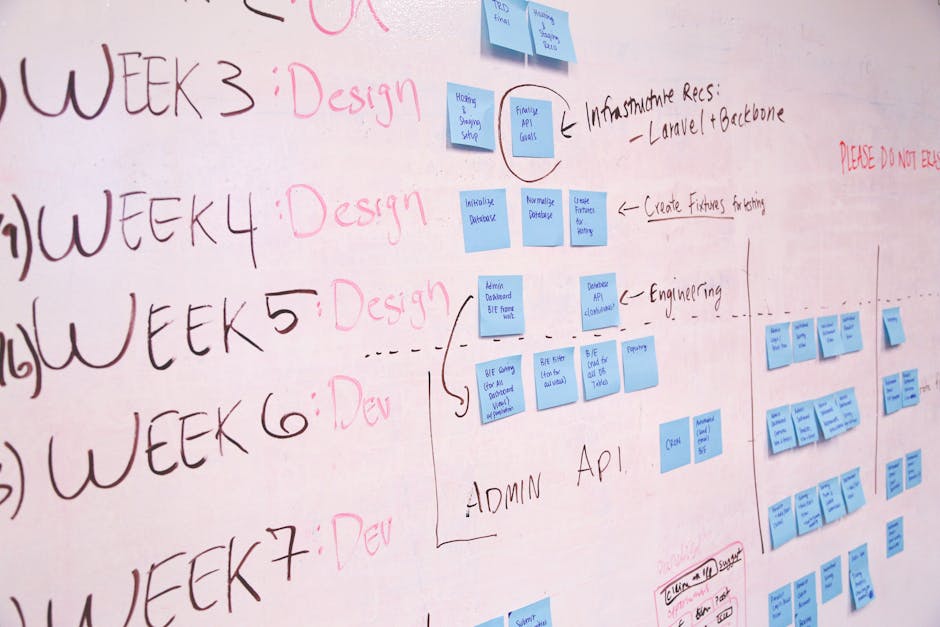Upgrading From Access In Leicester – How Planning Is Key
In the bustling city of Leicester, businesses are constantly faced with the need to upgrade their access systems, specifically, the Microsoft Access Database. This process, while essential for enhancing security and efficiency, can be a complex undertaking requiring careful planning and execution. Indeed, embarking on such an endeavour without adequate preparation can lead to unforeseen challenges and setbacks. Therefore, meticulous planning is key when upgrading from Access in Leicester.
This article aims to provide a comprehensive guide on how to successfully navigate the process of upgrading your access system in Leicester. By following a systematic approach that includes assessing your current system, identifying potential challenges, setting clear goals and objectives, developing a comprehensive timeline, creating a realistic budget, and implementing a smooth transition plan – businesses can ensure a seamless upgrade experience.
Through an analytical and detail-oriented perspective, this article will help readers understand the importance of thorough planning when it comes to upgrading their access systems in Leicester. By adhering to these guidelines, businesses of all sizes and industries can achieve optimal results while minimising disruptions during the transition phase.
Key Takeaways
Upgrading from a Microsoft Access Database in Leicester requires careful planning and consideration, just like a master chess player plotting their next move on the board. It is essential to assess the current database and identify any potential challenges that may arise during the transition, such as the size and complexity of the data. Clear goals and objectives should be set for the upgrade, along with a comprehensive timeline to ensure a smooth implementation process. To avoid any financial constraints, a realistic budget should be created based on the organisation’s needs and resources. Finally, creating a well-thought-out transition plan will help facilitate the upgrade process. With proper planning, upgrading from a Microsoft Access Database in Leicester can be a hassle-free and successful endeavour.
Assessing Your Current Access System

Assessing the effectiveness and limitations of one’s current Microsoft Access Database system is a crucial step in the process of upgrading, as it provides an objective understanding of the areas that need improvement and allows for informed decision-making. When considering upgrading strategies, it is essential to evaluate alternatives to ensure that the chosen access system alines with the organisation’s needs and goals.
This assessment involves examining various aspects of the current system, such as its functionality, security features, user interface, and scalability.
Firstly, evaluating the functionality of the current Microsoft Access Database system is vital in identifying its strengths and weaknesses. This includes assessing whether it meets all required functionalities, such as allowing users to perform necessary tasks efficiently and effectively. Additionally, determining if there are any limitations or bottlenecks in terms of data processing or user capacity can help identify areas for improvement.
Secondly, analysing the security features of the current Microsoft Access Database system is paramount. It is crucial to assess if the existing system adequately protects sensitive information from unauthorised access or breaches. Evaluating encryption protocols, authentication mechanisms, and audit trails can provide insights into potential vulnerabilities that need addressing during an upgrade.
Furthermore, considering user interface design is essential when assessing a current Microsoft Access Database system. An intuitive and user-friendly interface enhances productivity by reducing training time for new users while minimising errors during data entry or retrieval. Identifying any shortcomings in terms of navigation ease or clarity can inform decisions on potential improvements.
Lastly, evaluating scalability ensures that any future growth or increased demand can be accommodated within an upgraded access system. Assessing whether the current infrastructure supports expanding user bases or additional functionalities helps avoid costly integration challenges down the line.
By thoroughly assessing these aspects of their current Microsoft Access Database system—functionality, security features, user interface design, and scalability—organisations gain valuable insights into areas requiring improvement before proceeding with an upgrade. Identifying potential challenges associated with these aspects facilitates a comprehensive approach towards enhancing their overall access capabilities without compromising performance or efficiency.
Identifying Potential Challenges

Identifying potential challenges before upgrading from a Microsoft Access Database is vital for successful transition. By considering issues related to data compatibility, staff training, and financial constraints, organisations can develop effective strategies for overcoming these obstacles.
One potential challenge that may arise when upgrading from a Microsoft Access Database is the compatibility of data systems. Access databases often have specific formats and structures that may not be easily transferable to other systems. This could lead to difficulties in migrating data or integrating it with new software. To overcome this obstacle, organisations should consider investing in data conversion tools or seeking professional assistance to ensure a smooth transition.
Another challenge is the need for staff training and adaptation to new technology. Upgrading from Access may introduce employees to unfamiliar interfaces or functionalities, which can hinder productivity initially. Providing comprehensive training programmes and support materials can help employees navigate through these changes more efficiently.
Furthermore, financial constraints could pose a significant obstacle during the upgrade process. Investing in new software or hiring external consultants might require substantial financial resources. Organisations should carefully assess their budgetary limitations and explore alternative options such as open-source database management systems or phased implementation plans.
Setting clear goals and objectives will be the next crucial step towards achieving a seamless upgrade process without disruption to daily operations.
Setting Clear Goals and Objectives

Developing clear goals and objectives is essential in order to effectively steer the transition process towards a successful outcome, fostering motivation and direction amongst stakeholders. Defining success from the outset provides a framework for evaluating progress and determining whether the upgrade from a Microsoft Access Database has been achieved. By clearly articulating what constitutes a successful outcome, organisations can aline their efforts and resources accordingly.
Measuring progress is another crucial aspect of setting clear goals and objectives. It allows organisations to track their advancements throughout the transition process, identifying areas that may require additional attention or adjustment. This can be done through various means such as regular status updates, milestone assessments, or performance metrics.
To illustrate the importance of setting clear goals and measuring progress, consider the following table:
| Goals | Objectives |
|---|---|
| Upgrade all systems to a cloud-based platform | Migrate data from Access to new platform by end of Q3 |
| Improve efficiency by reducing manual processes | Automate report generation by end of Q2 |
| Enhance data security measures | Implement multi-factor authentication system by end of Q4 |
This table serves as a visual representation of the specific goals and corresponding objectives that need to be accomplished during the upgrade process. It provides clarity on what needs to be achieved at each stage, enabling stakeholders to monitor progress effectively.
Developing clear goals and objectives is vital for guiding an organisation’s transition from a Microsoft Access Database. Defining success criteria helps ensure alinement amongst stakeholders while measuring progress enables effective tracking throughout this journey. With well-defined goals in place, organisations can now proceed towards developing a comprehensive timeline for successfully upgrading their systems without any delay.
Developing a Comprehensive Timeline

Creating a comprehensive timeline is an essential step in the transition process, as it provides a structured roadmap for implementing the necessary changes and ensures efficient allocation of resources; studies have shown that organisations that develop detailed timelines are 30% more likely to complete their projects on time.
Allocating resources effectively is crucial during the upgrading process. A comprehensive timeline allows organisations to identify and allocate resources in a systematic manner, ensuring that all aspects of the upgrade are adequately supported.
One key aspect of resource allocation is managing user training. Upgrading from Microsoft Access Database requires users to learn new systems and processes. Without proper training, users may struggle with the new software, leading to decreased productivity and potential errors. By incorporating user training into the timeline, organisations can ensure that sufficient time and resources are allocated for training sessions, workshops, or online tutorials. This will enable users to adapt quickly to the upgraded system and maximise its benefits.
A comprehensive timeline also helps organisations stay organised by breaking down tasks into manageable units with clear deadlines. By outlining each step of the upgrade process, including data migration, software instilment, testing, and user acceptance testing, companies can effectively manage their progress towards completion. This level of detail ensures accountability amongst team members involved in the upgrade project.
Creating a comprehensive timeline is crucial when upgrading from Microsoft Access Database as it facilitates effective resource allocation and streamlines user training efforts. By allocating resources appropriately and providing adequate training opportunities for users during each phase of implementation, organisations can increase their chances of successful transition.
The next section will discuss creating a realistic budget for this upgrade project without compromising quality or scope.
Creating a Realistic Budget

A crucial aspect to consider when transitioning from Microsoft Access Database is creating a realistic budget that ensures the project’s success without compromising quality or scope. Budget planning and cost analysis are essential components of this process.
Before embarking on the transition, it is important to assess the financial resources available for the project and determine how they will be allocated.
Budget planning involves identifying all potential costs associated with upgrading from Access. This includes not only the cost of purchasing new software or hardware but also any additional training or support that may be required. It is important to take into account both direct costs, such as purchasing licences or hiring consultants, as well as indirect costs, such as employe time spent on the transition.
Cost analysis plays a critical role in creating a realistic budget. By carefully analysing each cost item and estimating its impact on the overall budget, organisations can make informed decisions about resource allocation. This analysis should include a thorough assessment of potential risks and uncertainties that could affect project costs.
Creating a realistic budget requires balancing competing priorities and making trade-offs between different aspects of the transition project. It is important to ensure that adequate funding is allocated to key areas while avoiding unnecessary expenditures.
Careful budget planning and cost analysis are essential for a successful transition from Microsoft Access Database. By creating a realistic budget, organisations can allocate resources effectively and minimise financial risks.
The next section will discuss implementing a smooth transition plan without compromising data integrity or disrupting daily operations.
Implementing a Smooth Transition Plan

Implementing a smooth transition plan that ensures minimal disruption and maintains data integrity is crucial for the success of the migration process. Change management strategies play a vital role in facilitating a seamless transition from the Microsoft Access Database to a new system. It is important to involve all stakeholders, including employees, during the planning stage to gain their support and address any concerns they may have. By effectively managing change, organisations can minimise resistance and increase employe acceptance of the new system.
Staff training is another key aspect of implementing a successful transition plan. Providing comprehensive training programmes equips employees with the necessary skills and knowledge to adapt to the new system quickly. This includes not only technical training but also education on how the new system will improve their work processes and efficiency.
To understand the emotional impact of upgrading from the Microsoft Access Database, consider the following table:
| Emotional Impact | Response |
|---|---|
| Uncertainty | Address concerns promptly |
| Resistance | Communicate benefits clearly |
| Fear of job loss | Reassure job security |
Understanding these emotional responses allows organisations to tailor their communication strategies accordingly and provide reassurance throughout the transition process.
Implementing a smooth transition plan requires effective change management strategies and thorough staff training. By addressing concerns, providing comprehensive training, and understanding emotional responses, organisations can ensure minimal disruption and maintain data integrity during an upgrade from the Microsoft Access Database.
Frequently Asked Questions
What are the common reasons why businesses upgrade from Access in Leicester?
Common reasons for upgrading from the Microsoft Access Database in Leicester include the need for enhanced functionality, improved security and data protection measures, increased scalability to accommodate business growth, better integration with other systems, and access to advanced features and support. Upgrading offers businesses various benefits such as increased efficiency, productivity, and competitiveness in the market. Businesses of all sizes can benefit from upgrading, with many finding that the improved features and support enable them to better meet their customers’ needs and stay ahead of the competition.
How can businesses ensure a seamless integration of the new system with their existing processes?
To ensure a seamless integration of the new Access system with existing processes, businesses must meticulously analyse and aline their workflows, data structures, and user requirements. This analytical approach facilitates a smooth transition by minimising disruptions and optimising productivity. Careful consideration of the organisation’s individual needs, along with thorough testing of the new system, can help to ensure that the integration is as successful as possible.
What are the potential risks or drawbacks of upgrading from Access in Leicester?
Potential risks of upgrading from Microsoft Access Database in Leicester include system compatibility issues, employe resistance to change, disruption to daily operations, and the need for extensive training. These challenges can have a negative effect on productivity and job satisfaction during the transition period for any business or organisation.
Are there any industry-specific considerations that should be taken into account when planning an upgrade from Access in Leicester?
Industry-specific challenges and best practises must be considered for a successful upgrade from a Microsoft Access Database in Leicester. These considerations ensure alinement with the unique requirements and regulations of the industry, facilitating a smooth transition and minimising potential disruptions for any business or organisation.
What are the available resources or tools that can assist businesses in the process of upgrading from Access in Leicester?
Available resources for upgrading from the Microsoft Access Database in Leicester include software migration consultants who can provide expert guidance, as well as online tutorials and guides that offer step-by-step instructions. These tools can assist businesses of all sizes and industries in navigating the upgrade process effectively and efficiently.
Conclusion
Upgrading from a Microsoft Access Database in Leicester requires careful planning and consideration. It is essential to assess the current database and identify any potential challenges that may arise during the transition.
Clear goals and objectives should be set, along with a comprehensive timeline to ensure a smooth implementation process. To avoid any financial constraints, a realistic budget should be created.
Finally, creating a well-thought-out transition plan will help facilitate the upgrade process. To conclude, upgrading from a Microsoft Access Database in Leicester requires meticulous planning akin to a master chess player plotting their next move on the board.
Contact us to discuss our services now!
